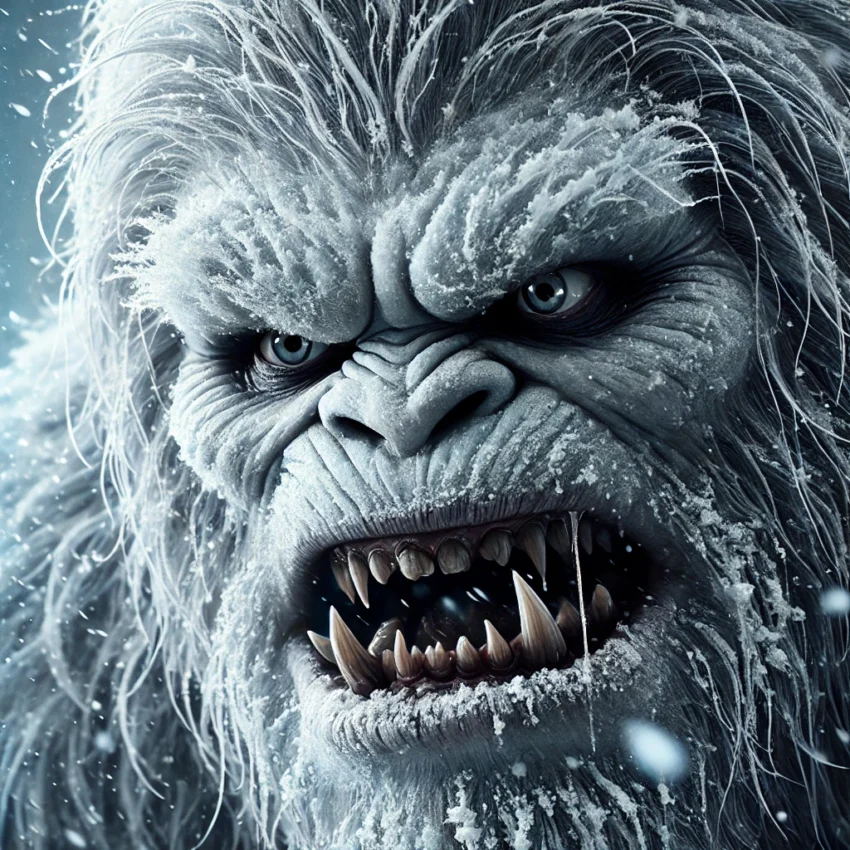
Abominable Snowman | The North American Yeti
Explore the mysterious abominable snowman: its history, physical traits, habitat, and behavior. Learn the key differences between the Yeti, Sasquatch, and the snowman, and discover survival tips for a potential encounter. Based on cryptoprimatology research, this monster profile delves into the chilling truth behind the recent Ruby Creek attack.
History of Snowman Sightings
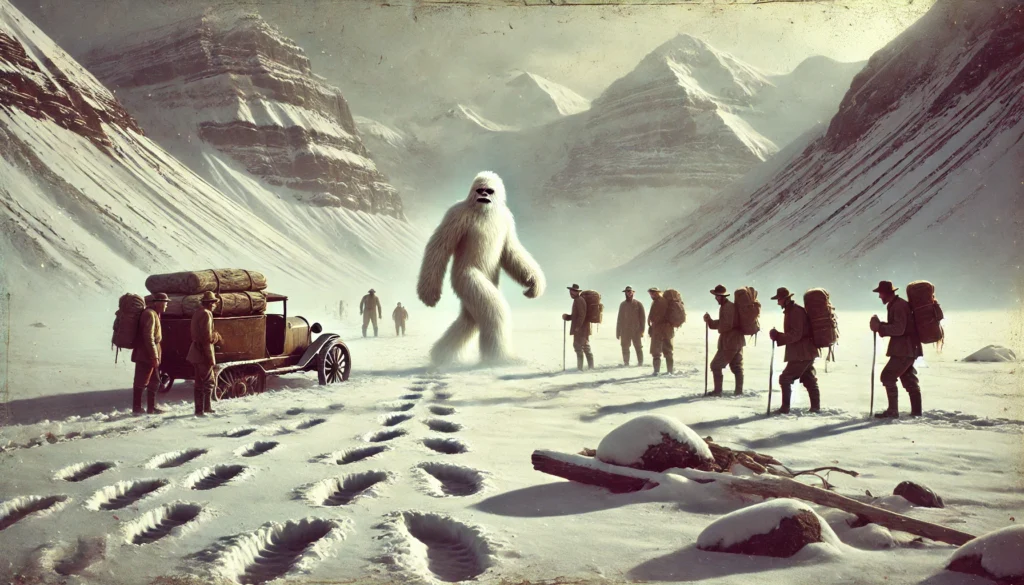
The abominable snowman, also known as the North American Yeti, has roots that go back centuries. Indigenous legends and folktales in the Pacific Northwest and across Canada tell of towering, white-furred creatures roaming the snow-capped mountains. These stories were often shared as cautionary tales to keep people from wandering into dangerous, isolated areas during winter.
The first documented Western encounter came in the early 20th century when mountaineers in British Columbia reported seeing enormous footprints in the snow that could not be attributed to any known animal. This sparked curiosity in both the media and the scientific community. By the 1920s, the term “Abominable Snowman” began to take hold, largely due to sensationalized reports by journalists who compared the sightings to the Yeti of the Himalayas.
The last major sighting before the recent attack in Ruby Creek occurred more than 70 years ago, during a severe winter in the 1950s. Several locals in the Sowerby Peak region claimed to have seen a large, ape-like creature wandering near their hunting cabins. Despite attempts by cryptozoologists to find more evidence, the creature seemed to vanish back into the highest, most remote areas of the mountains—until now.
Physical Characteristics

The abominable snowman is an imposing figure, standing between 3.5 to 4.5 meters (approximately 12 to 15 feet) tall. It is covered in thick, matted fur that ranges in color from pure white to gray, perfectly camouflaging it against the snow-covered landscape. The creature’s fur is known to provide excellent insulation, allowing it to survive in freezing temperatures.
Its muscular build is one of its most striking features, with powerful arms and legs that allow it to traverse rugged, snowy terrain with ease. Witnesses have described its hands and feet as massive, with thick, sharp claws capable of gripping ice and climbing steep cliffs. The abominable snowman’s facial features are often compared to those of a great ape—deep-set eyes, a flat nose, and a wide mouth filled with sharp teeth. These adaptations make it not only a formidable predator but also a highly capable survivor in its harsh environment.
Habitat
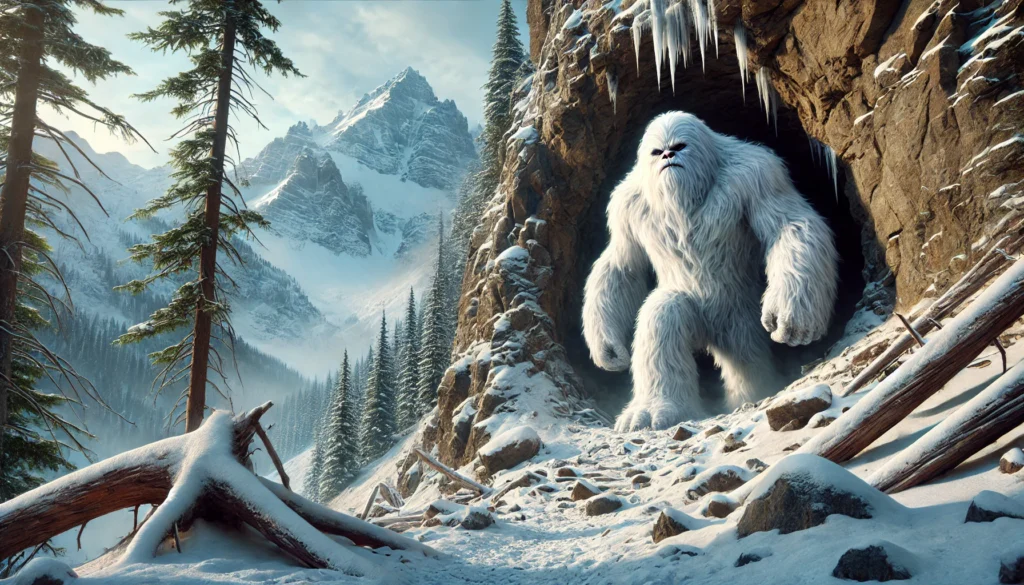
The abominable snowman is typically found in the most remote and inhospitable areas of North America. It prefers high-altitude environments, often above 5,200 feet, where the air is thin, and temperatures are consistently below freezing. These mountainous regions provide both isolation and the perfect conditions for the creature to remain undetected.
The recent sighting near Ruby Creek, however, suggests that these creatures may occasionally descend to lower elevations, potentially in search of food or due to environmental pressures. Their preferred habitat consists of dense coniferous forests, steep mountain slopes, and areas with plenty of natural caves or crevices where they can take shelter from extreme weather.
Behavior

The abominable snowman is generally considered a solitary and territorial creature. Unlike its Himalayan counterpart, the Yeti, which is known to be elusive but not overtly aggressive, the North American abominable snowman can be highly dangerous if provoked. It has been known to defend its territory fiercely, particularly when it perceives an intrusion or threat.
The recent attack at Ruby Creek is a rare instance of the snowman engaging with humans in such a violent manner. Cryptoprimatologists, like Dr. Gregory Hayes, theorize that this behavior might have been triggered by stress—possibly due to dwindling food supplies or environmental changes. Normally, the abominable snowman avoids human contact, relying on its keen sense of hearing and smell to detect intruders long before they get too close.
These creatures are also known for their impressive strength and agility. They can move silently through the snow, despite their size, and are capable of covering large distances quickly. During the winter months, they are believed to enter a state of reduced activity, not quite hibernation but a period of energy conservation to cope with scarce food resources.
Diet
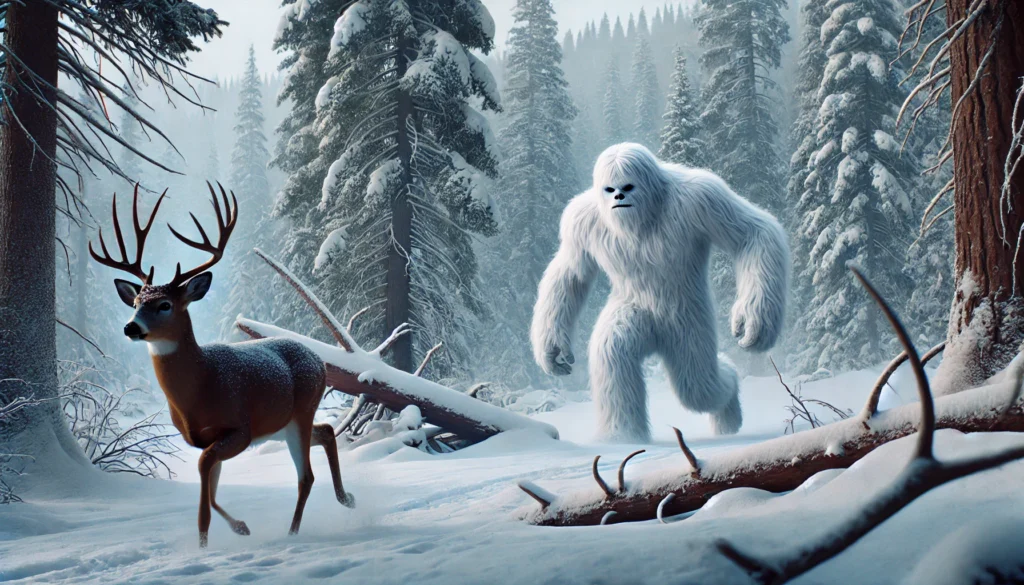
The abominable snowman is believed to be an omnivore, with a diet that varies based on availability. In its high-altitude habitat, food sources are limited, so the creature has adapted to eat whatever it can find. This includes small mammals like mountain hares, birds, and even fish from partially frozen streams. It is also known to forage for berries, roots, and other vegetation during the warmer months when the snow recedes.
There are also reports suggesting that the abominable snowman may scavenge from carcasses left by other predators or natural causes. This opportunistic behavior is likely crucial for its survival in an environment where fresh food can be scarce for months at a time.
Differences Between Yetis, Snowmen, and Sasquatch
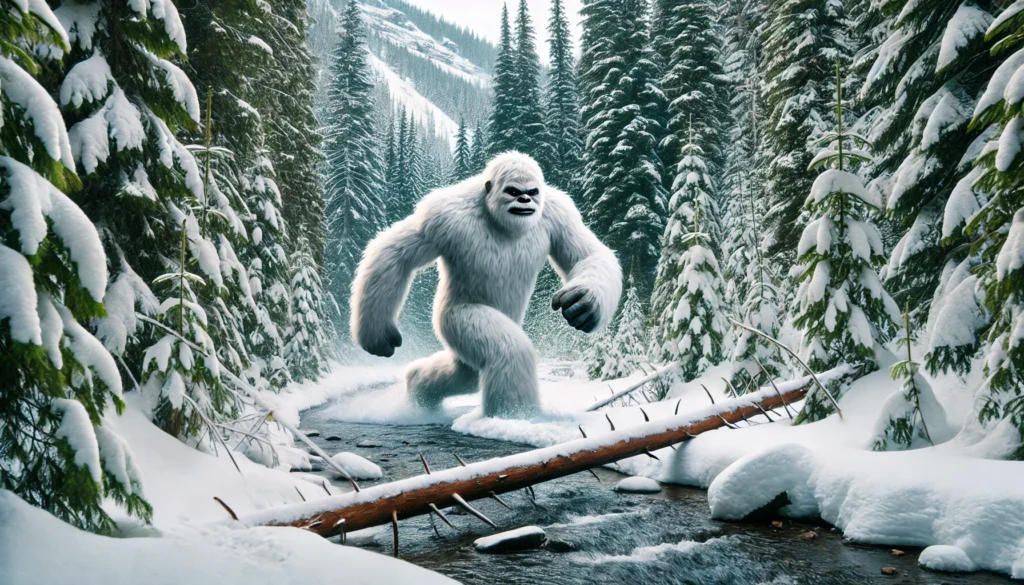
While the abominable snowman, Yeti, and Sasquatch share some similarities, they are distinct species adapted to their respective environments:
- Yeti: The Yeti, often called the “Meh-Teh,” is native to the Himalayas. It is generally smaller, standing around 6 to 10 feet tall, and has darker fur compared to the abominable snowman. The Yeti is adapted to the high-altitude, snowy environment of the Himalayas and is known for its elusive nature.
- Abominable Snowman: The abominable snowman is a larger subspecies of the Yeti, adapted to the harsh climates of North America. It is taller, more muscular, and has lighter fur that helps it blend into its snowy surroundings. Unlike the Yeti, it has been known to display aggressive behavior, particularly when threatened.
- Sasquatch: Also known as Bigfoot, Sasquatch is native to the temperate rainforests of North America, particularly in the Pacific Northwest. It stands around 7 to 10 feet tall and is covered in dark brown or black fur. Unlike the abominable snowman, Sasquatch is more often associated with forested areas and is generally not considered aggressive. It is believed to be curious about humans but tends to avoid direct contact.
How to Protect Yourself from a Snowman Attack

Encounters with the abominable snowman are extremely rare, but given the recent events at Ruby Creek, it’s important to know how to protect yourself. Here are some key tips:
- Avoid High-Risk Areas: The best way to stay safe is to avoid areas where sightings have been reported, particularly during winter when the creature is more active at lower elevations.
- Make Noise: Like many wild animals, the abominable snowman may avoid contact if it knows humans are nearby. Traveling in groups and making noise can help deter it from approaching.
- Carry Flares or Bright Lights: The snowman is known to be nocturnal and may be deterred by sudden bright lights. Carrying flares or a powerful flashlight could give you a crucial few seconds to escape.
- Do Not Run: If you encounter a snowman, do not run. Sudden movements could trigger a predatory response. Instead, back away slowly while maintaining eye contact, making yourself appear as large as possible.
- Use Tranquilizers: In extreme cases, tranquilizers have been used successfully, as seen in the recent Ruby Creek incident. However, this should only be attempted by professionals.
Sources for Factual Information
The information presented in this profile is based on a combination of eyewitness accounts, cryptoprimatologist research, and folklore from Indigenous communities in North America. Special thanks to Dr. Gregory Hayes for his insights into the behavior and biology of the abominable snowman. Additional data has been gathered from field reports, historical records of sightings, and recent investigations conducted by the Monster Bureau team.

Jacob Rice began investigating and writing about monsters in 2007. He has published 3 books on ghost hunting, ghost stories and paranormal protection. His podcast, Ghostly Activities, dives into these topics even more. You can also watch his ghost hunts on the Ghostly Activities YouTube channel. He lives in Olympia, Washington.
Discover more from Ghosts & Monsters
Subscribe to get the latest posts sent to your email.